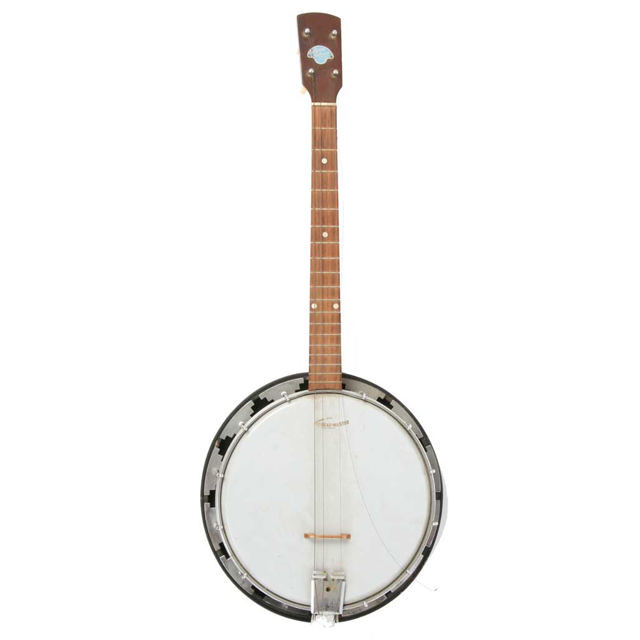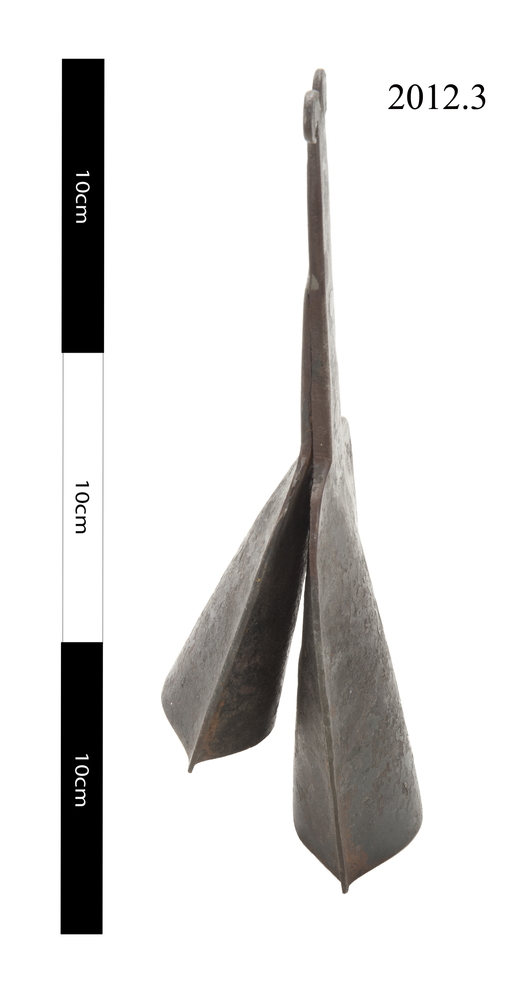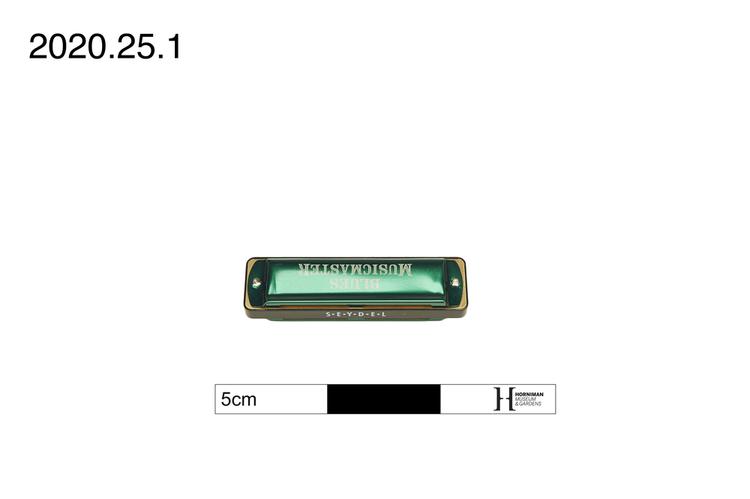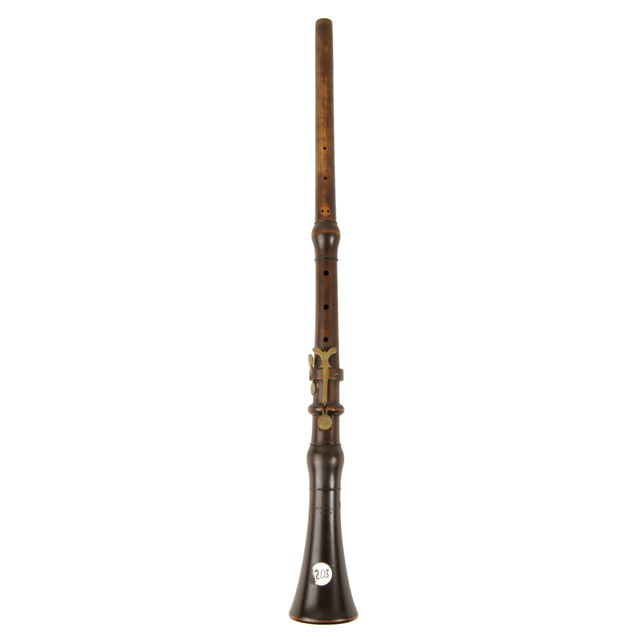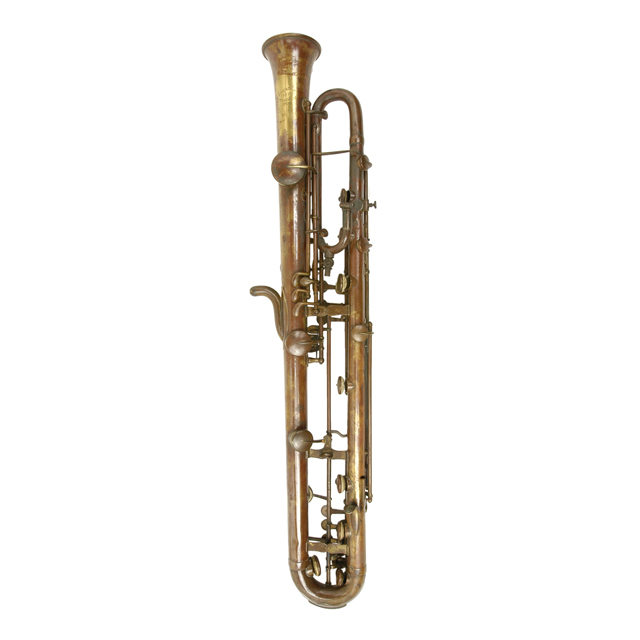
Baritone sarrusophone in E flat. Brass body. Eighteen keys, circular slightly domed cups with leather pads. Four sets of key rollers. Water key on crook receiver. Crook and mouthpiece missing. Attachment for music card holder.
Bell rim stamped: BOOSEY & COMPy./13011/24 & 28. HOLLES St./LONDON; Paper label adhered to bell has in D.J. Blaikley's hand: 93. SARRUSOPHONE/BRASS - Eb. TENOR/18 BRASS K./1874
The French bandmaster Pierre-Auguste Sarrus, in collaboration with the Paris instrument maker Pierre-Louis Gautrot, patented the Sarrusophone in 1856. The sarrusophone was developed to replace the oboe and bassoon in the military band and thus create a uniform tone colour for the family of double-reed instruments. Nine different sizes were made ranging from the sopranino in high E flat to the contra bass in BB flat or C. Although they were introduced into French bands, and the contra bass in C was sometimes used to replace the contra bassoon in the orchestra, they were not widely adopted outside of France as their tone was considered too coarse to act as an effective substitute to the oboe or bassoon.



